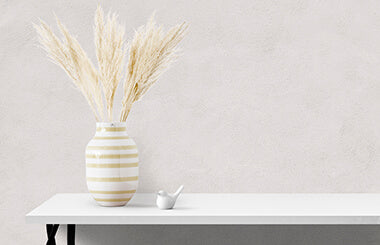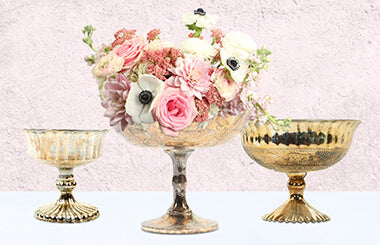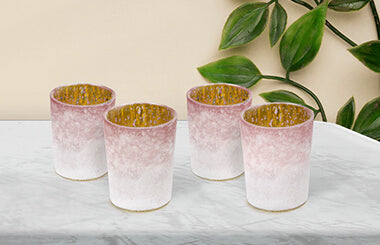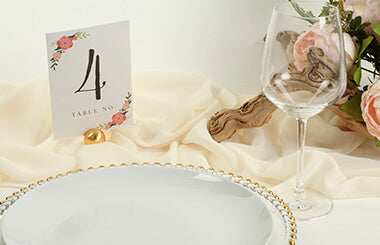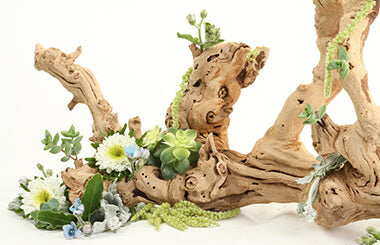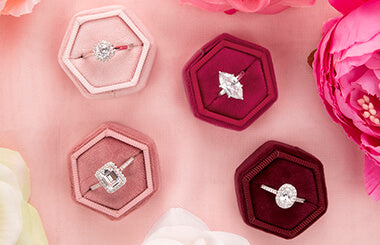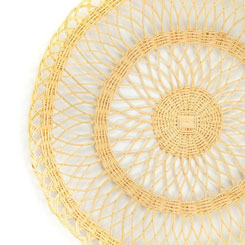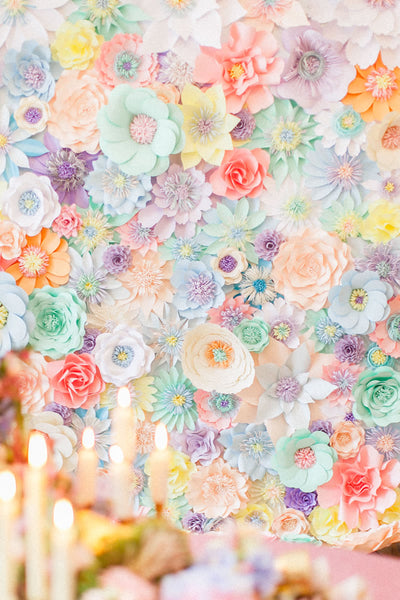Get The Latest Updates On New Arrivals, Sales + Promotions
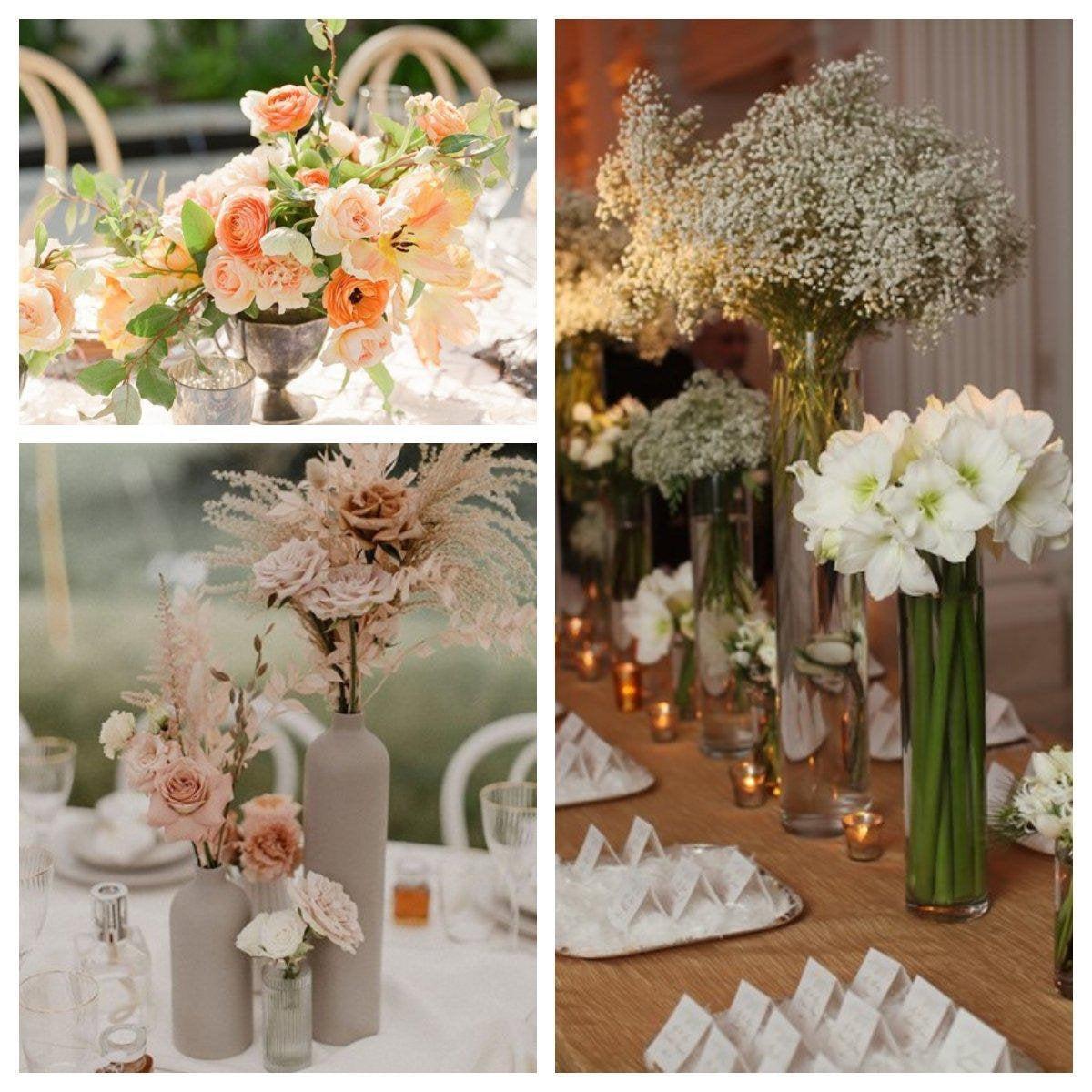
11 Tips from Top Florists: How To Design Your Wedding Centerpieces
Nothing makes a wedding come alive like flowers. Many brides and grooms make the mistake of thinking that arranging a few blooms on reception tables is all it takes, only to find out that designing wedding centerpieces is way more difficult than it seems. Even if you’re working with a florist, you may find it’s more difficult to get the wedding day look you want than you thought!
Whether you’re designing your wedding centerpieces on your own or you’re working with a professional, these tips will make sure your flowers look exactly the way you want:
- Choose seasonal flowers
- Think about stems
- Skip symmetry and go for balance
- Keep things tight
- Incorporate dried and faux flowers carefully
- Choose vases carefully
- Be flexible
- Know your numbers
- Make sure arrangements look good from every angle
- Get input from someone else
- Show your florist what you like

Asymmetrical Floral Arrangement With Poppies and Ranunculus: Ariella Chezar, Amaryllis and Baby’s Breath Flower Arrangements: Beautiful Blooms, Floral Arrangement Featuring Dried Flowers and Roses: Frieda Theres
Choose Seasonal Flowers
Liz Inigo-Jones of Blue Sky Flowers always reminds brides that there are a lot of flowers available year round. Even things like amaryllis and paperwhites are available in the winter! Use seasonal blooms and you’ll save money because they are being harvested in abundance.
Think About the Stems
Most brides and grooms focus on the look of the blooms, but Sarah McErlean of Park & Bloom says it’s also important to think about the stems of flowers. For example, “Ranunculus and tulips are more difficult to work with—they break more easily and can wilt faster.” Roses, carnations, orchids, and most greenery have stems that will stay upright all day long.
Skip Symmetry and Go For Balance
If you’re new to flower arranging, you’re probably tempted to keep things symmetrical—don’t! Christopher Graham of Artistic Manner Flower Shop and Greenhouse suggests focusing less on symmetry and more on balance to not only get more interesting arrangements, but for the fact that it’s easier too. It’s nearly impossible to get symmetrical arrangements just right, even when you use the same type of flowers!
Keep Things Tight
If your arrangement is looking wilted and droopy, it’s important to follow the advice from the florists at BloomThat who recommend creating clusters of flowers before adding them to a larger arrangement. “Pull a few elements together in clusters of three. They will naturally draw your eye and attention.”
Incorporate Dried and Faux Flowers Carefully
Dried flowers are hugely popular at weddings, but they can be still and lack movement, says Sarah McErlean of Park & Bloom. She suggest adding “dried grasses and delicate textures to add some movement, or mix them with fresh flowers.”
When it comes to faux flowers, invest in high-quality blooms because the difference between them and bargain silk blooms is noticeable.

Floral Lantern Centerpiece: Rock My Wedding, Small Floral Centerpiece Featuring Peonies: Style Me Pretty, Asymmetrical Floral Arrangement Featuring Dahlias: Caroline Morris Photography
Choose Vases Carefully
Don’t just use whatever vases you have laying around. Think carefully about the look you want. For example, the experts at Riverside Flower Club recommend opaque vases to hide messy stems, but if flowers are well-cut, they can look striking in glass hurricane vases. They also suggest keeping arrangements low so they don’t interfere with conversations during dinner.
You may also want to consider vase alternatives. Flowers can look stunning in things like lanterns, compote vases, and more.
Be Flexible
Be flexible about the blooms you want to include in your arrangements, but it also means rethinking other elements of your centerpieces. For example, the experts at Griffin’s Floral Design often ask clients if they really want towering centerpieces that will obstruct their guests’ line of sight? Be willing to adjust your vision to make sure it’s practical, beautiful, and affordable.
Know Your Numbers
Surprisingly, if you want stunning floral centerpieces, you have to do some math. "Different designs bear different heights and widths, but what is most appealing to the eye—what looks the best, what's most accepted, what you'll find in a book—is two and half times," explains Christopher Graham of Artistic Manner Flower Shop and Greenhouse. For example, if you have a 10-inch vase, your arrangement should be about 25 inches tall.
Make Sure Arrangements Look Good From Every Angle
At home, arrangements on shelves and tables can look good from one angle. Wedding arrangements should look good from every angle. The experts at Riverside Flower Club add that guests should be able to admire the arrangement no matter where they sit.
Get Input From Someone Else
“The process of making a flower arrangement involves many of the same principles that go into making fine art,” says New York–based floral designer Ariella Chezar. If you’re struggling, it’s a good idea to ask a more artistic friend or family member for help. They can help you keep color, texture, focal points, and flower varieties looking their best. If you are still finding it difficult, it is helpful to get input from a florist.
Show Your Florist What You Like
"I always suggest to brides that they come to their first consultation armed with magazine cuttings, Pinterest boards, etc. of ideas they have, as often what a bride sees and what she describes can be different,” says Liz Inigo-Jones of Blue Sky Flowers. So feel free to bring any visions or inspiration you have for your big day!



